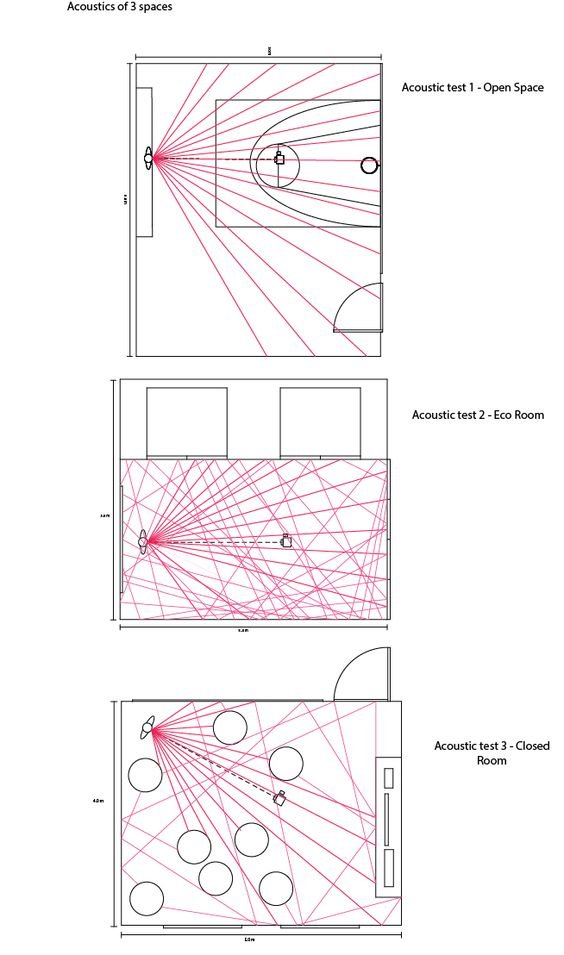(unknown, n.d,)
Acoustic Spaces
An acoustic space is defined as an acoustic environment in which sound can be heard by an observer. This terminology was developed by the professor and philosopher Marshall McLuhan.
(Utsahaji, n.d.)
In the field of music, it is defined as the perceived area encompassed by a soundscape which can either be an actual environment or one that is imaged through the sphere of sound produced by a tape recording and several loudspeakers.
Within such a space, every sound channels information about the space in which it occurs (otherwise known as environmental sound) or is thought to occur (otherwise known as synthesized sound).
Environmental Sound
Loudness and quality of reverberation of the sound is determined mostly by the type of space in which the sound is channeled in. For instance, is the space huge or tiny? Is it open or enclosed? Here comes into play the nature of acoustics which can be defined by a few principles
Nature of Acoustics
The two main factors of acoustics that can affect the quality of sound or interfere with the sound in an acoustic space are Reflection and Diffraction.
Reflection refers to the shift in direction of a wave when it hits an object. Sound being a wave, usually reflects off a wall and interferes with other sound waves that are generated later, causing potential interference that can be synthesised to create unique sound experiences. More often than not, a diffusor is used to scatter the sound waves in random directions to prevent sound waves from reflecting directly to the receiver.
Diffraction refers to the change of a sound wave’s propagation to avoid obstacles. This is following Huygens’ principle which states that when a sound wave is partially blocked by an obstacle, the remaining part that gets through acts as a source of secondary waves.
Materials & Acoustics
Acoustic materials come in a variety of foams, fabrics, metals etc. These materials are often utilised to absorb or block sound inside and outside of acoustic spaces. These materials are used in two ways, Soundproofing and Sound Absorbing.
Soundproofing is a process where noise generated from outside a given space is blocked from entering the space.
Sound Absorbing is a process where noise generated within a space is reduced inside the space itself.
Acoustic Spaces & Architecture
In the field of architecture, acoustic spaces play a paramount role. In several kinds of architecture, acoustics play a pivotal role in creating an immersive experience. For instance, Concert Halls and Cathedrals.
In Concert Halls that hold a large audience of around 2000 people, 3 main factors come into play to create a good listening experience. These factors include Loudness, Ambiance and Clarity. In other to achieve a good balance of these factors, the space has to be designed such that every individual regardless of where they are situated, can enjoy the full experience. Seating arrangement can affect the clarity of the sound for each individual, reverberation is manipulated depending on the performance (eg. romantic music will require a higher ceiling to create a larger reverb for a more emotional touch to the sound).
In Cathedrals, more often than not a choir will be present near the transept. In religious singing of hymnals, a balance of mood and ambiance needs to be established and hence the height of the cathedral needs to be designed in a manner that can achieve that acoustics.
In an Acoustic Space, the space is designed for sound to thrive and reach the observer in the best possible manner. Every part of the space plays a huge role, be it the size of the space or the material used.







